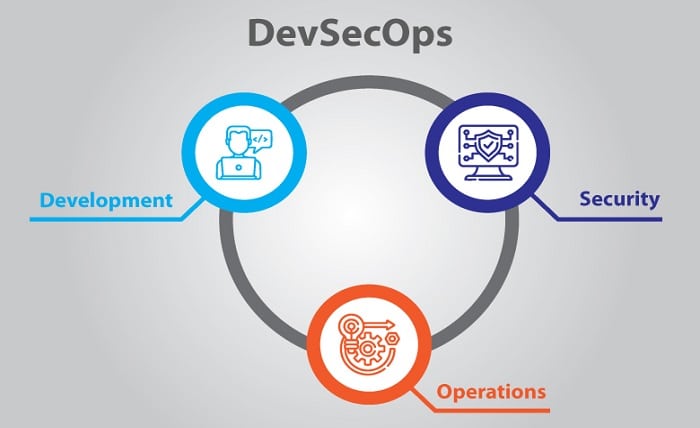Securing your Software Development through DevSecOps

DevSecOps or Development Security Operations, is an important practice that combines security practices into software development and IT operations. With DevSecOps, security is built into every stage of the development lifecycle rather than being an afterthought. Here are some key things to keep in mind to implement effective DevSecOps Best Practices:
-
Start Early with Security in Mind
It is always better to consider security aspects right from the initial stages of software development rather than as an afterthought. Starting security early in the development lifecycle has several advantages. When security is incorporated early during planning and design phases, it allows defining app security requirements at par with functional requirements. This ensures security controls are built into the architecture and not bolted on later.
Early threat modeling and risk analysis helps understand potential security vulnerabilities and threats against an application. Based on this, appropriate controls can be implemented while coding the application to mitigate risks. For example, input validation, authorization checks etc. can be written into the code from the start. Including security simultaneously with development prevents costly reworks later. If security is left for later stages like testing, it often requires re-engineering parts of the application to address issues found. This increases timelines, resources and budget for the project.
-
Automate Security Testing
Automating security testing is one of the most important aspects of DevSecOps. It ensures that security is integrated seamlessly into the development process without causing delays. With automated testing, security checks become part of the regular development workflow through a CI/CD pipeline. This means that as soon as code is committed or changes are made to infrastructure, a series of automated security tests will run in the background. Different tools can be leveraged to test different aspects automatically.
Static application security testing (SAST) tools analyze source code for vulnerabilities without executing the code. Dynamic application security testing (DAST) tools find vulnerabilities by interacting with running applications. Container security tools scan container images for any issues. Infrastructure as code (IaC) scanning checks infrastructure definition files and configurations. Together these tools provide comprehensive security coverage of the code, containers and infrastructure with minimal manual effort. Automated testing catches security bugs early before they become serious flaws.
-
Embed Security in Culture
For DevSecOps to be truly effective, security must become the responsibility of everyone in the development team and not just security specialists. The culture should promote secure coding practices, responsible disclosure of vulnerabilities and making security part of day-to-day work.
Educate developers about the “why” and “how” of security. Help them understand common vulnerabilities and threats. Reward and recognize secure practices. This shifts mindset from an “add-on” activity to integral part of the job. With the right culture, people will code securely without being told.
-
Use Infrastructure as Code
Infrastructure as code (IaC) is a cloud-native practice where infrastructure resources are provisioned through code. With IaC, infrastructure setup and configuration is treated as code stored in version control. This brings infrastructure under same governance model as application code.
IaC enables infrastructure to be tested, secured and managed just like application code. It ensures consistent and repeatable environments. Tools allow defining infrastructure securely through configuration files tested alongside application code. IaC is foundational for Dev and Sec teams to collaborate effectively.
-
Implement Least Privilege Principle
The principle of least privilege states that every entity should operate using least set of privileges necessary to complete the job. In DevSecOps, this means applications and infrastructure should not be deployed with more access than required.
Use role-based access control (RBAC) to restrict what users, applications and infrastructure components can access based on their function. Monitor for privilege escalations. Rotate credentials regularly. Define principles around “break glass” accounts to limit damage from compromises. Implementing least privilege is key to minimizing impact of breaches.
-
Monitor and Respond to Incidents
Even with best practices, security incidents may occur. That’s why monitoring security of applications and infrastructure is important part of DevSecOps. Define what to monitor (logs, metrics, configurations etc.), how frequently to monitor and alerts for any anomalies.
Respond to incidents following an incident response plan. Learn from incidents to further strengthen security controls. Regular monitoring helps detect issues proactively. It also demonstrates to stakeholders that security controls are working as intended. Incident response builds organizational resilience against future threats.
-
Use DevSecOps for Cloud Migrations
Migrating to cloud is a massive transformation for many organizations. DevSecOps provides a secure way to build and manage cloud native applications. It ensures security best practices are followed right from planning cloud architecture to managing workloads on cloud.
Leverage security features of cloud platforms like identity and access management, encryption, logging, monitoring etc. Define how applications will be securely deployed, configured and updated on cloud. Continuously assess cloud resources and workloads for vulnerabilities. DevSecOps allows realizing full security benefits of cloud computing.
-
Make Security Transparent
For DevSecOps to succeed, security must not block or slow development teams unnecessarily. Security controls and testing should have minimal friction and be transparent to developers. Automate as much as possible and provide quick turnaround times for any manual security reviews.
Communicate security requirements upfront instead of big surprises later. Share security standards, policies, vulnerabilities found and remediation status transparently. This builds trust between security and development teams. With transparency, people understand need for security controls and are more willing to comply.
-
Focus on People, Process and Technology
DevSecOps is not just about point security tools and technologies. It requires aligning people, processes and technologies to achieve the shared goal of secure software development.
Focus on training people, defining clear processes around security activities, establishing collaboration between security and development teams and using automation technologies to cement security practices. With the right people, well-defined processes and enabling technologies, DevSecOps ensures security is never an afterthought in software development.
Conclusion
DevSecOps is a holistic, collaborative and automated approach to develop and operate secure applications. Following the best practices outlined here like embedding security early, automating testing, cultivating the right culture and leveraging cloud capabilities helps achieve the security and agility promises of DevSecOps.




